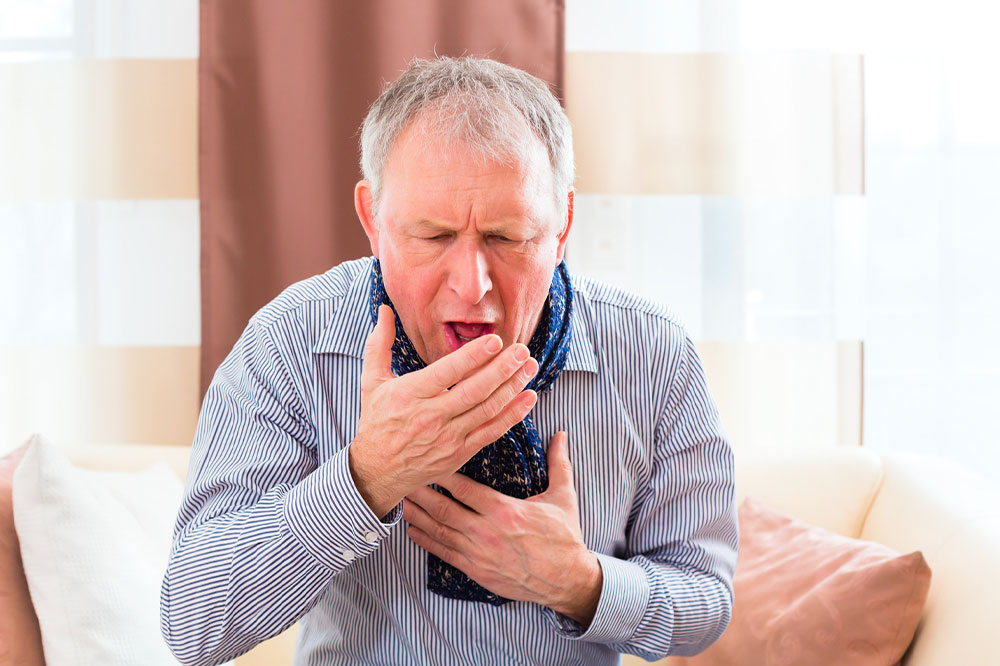12 early warning signs of COPD

Chronic obstructive pulmonary disease (COPD) refers to a number conditions that cause breathing problems and airflow obstructions. The condition affects over 16 million people in the country. Moreover, more than a million more suffer from COPD, but their symptoms go undiagnosed and untreated because they misidentify it as other underlying complications. A cure for COPD is yet to be discovered; hence, learning about its early signs could help one in managing the condition.
Chronic cough
It isn’t uncommon for people to contract infections that lead to a cough. It usually goes away in a couple of days or weeks. Coughing is also a protective mechanism that may respond to irritants in the air that enter the lungs. A cough could also help remove mucus and phlegm. However, if the cough is persistent, and if one experiences a chesty cough that does not go away, it could indicate the onset of COPD. Healthcare experts usually consider coughs that last more than eight weeks to be chronic. So if one experiences this sign, they should consult with an expert immediately.
Excess mucus production
Mucus helps keep the airways lubricated, and attracts and captures germs and irritants that enter the lungs. But if there is excessive production of mucus, it may suggest the development of COPD. The inhalation of an irritant is one of the triggers for high mucus production. A few include dust, pollution, chemical fumes, paints, and strong cleaning products. Perfumes, hairsprays, and other spray cosmetics may also lead to excessive mucus production. So if one is at risk of COPD, one must reduce or avoid contact with such elements.
Shortness of breath
Shortness of breath could result naturally from overexerting in some form of physical activity like playing sports or exercising. However, if breathlessness occurs suddenly and unexpectedly, it could be a potential symptom of COPD. At first, the sign might be noticed after strenuous exercise, but it may worsen with time. If one is affected with COPD, they may need to make additional effort to breathe. Some individuals may find it tedious to cope with their breathing issues as they end up becoming less active, which could affect their overall physique. Therefore, if this sign is noticed, one should visit an expert for diagnosis immediately.
Rapid breathing
When one develops COPD, they may experience signs like rapid or shallow breathing. The symptom may surface because the body tried to compensate for the lack of oxygen exchange in the lungs. So if one notices signs like rapid breathing, they should speak to an expert to check for COPD.
Wheezing
If one suffers from wheezing, they experience a high-pitched, whistling sound that usually occurs during exhalation. This is caused by the narrowing or obstruction of airways. Wheezing is a common symptom of health conditions including asthma, bronchitis, and pneumonia. But one should note that long-term inflammation and damage of the bronchial tube lining, caused by COPD, is also a contributing factor to the sign.
Chest tightness
If one experiences a tightness in their chest, they must get themselves checked immediately. The pressure in this region is a potential indicator of the onset of COPD, and could make it difficult to breathe. Chest tightness usually results from inflamed and constricted airways or mucus buildup in the lungs.
Fatigue
Feeling fatigued is common if one does not get appropriate sleep, or after working longer than they should on a given day. However, the sudden onset of fatigue could result from conditions like COPD. The obstruction of airways could make it difficult to regulate the transfer of oxygen into the lungs and release carbon dioxide. As a result, there is a reduction in airflow and an increase in carbon dioxide, which may make one feel fatigued. The symptom may surface even if the individual is well-rested and has not performed any strenuous activity.
Regular lung infections
Developing symptoms like a cold and cough once in a while is normal. However, if someone is affected by a long-lasting disease like COPD, it may result in frequent infections. The recurring illnesses might make the individual more susceptible to catching colds, or other symptoms like flu and pneumonia. The infections usually make the symptoms of COPD worse and may further damage the lungs. Due to this damage, one may experience lung infections more often.
Swollen ankles
The early warning signs of COPD could also extend to the ankles. Swelling in the feet, legs, and ankles, which is known as peripheral edema, could be an indicator of COPD. This happens when the disease begins to affect the heart’s ability to pump blood effectively to the respective organs. As a result, fluid starts to build up in the lower extremities.
Insomnia
Shortness of breath and coughing are usually symptoms caused by COPD. These symptoms make it difficult for one to get adequate rest at night, which leads to disrupted sleep patterns. The lack of proper rest can result in symptoms like insomnia.
Bluish discoloration of the skin
Skin color could change based on multiple factors such as exposure to the sun or health conditions like vitiligo. However, experts indicate that these symptoms result from conditions like COPD. The worsening of respiratory function could result in the lack of sufficient oxygen levels in the blood. Thus, one may notice a bluish discoloration of the skin. Other regions that may also lose color include the nail beds and lips.
Barrel chest
Those who experience symptoms like a barrel chest may notice a bulging, rounded-like appearance of the chest, which is caused by chronic overinflation of the lungs. The sign may develop gradually in individuals with COPD because of air remaining in the lungs during exhalation. The air is usually trapped due to constricted airways, which makes it tedious for one to exhale appropriately.



